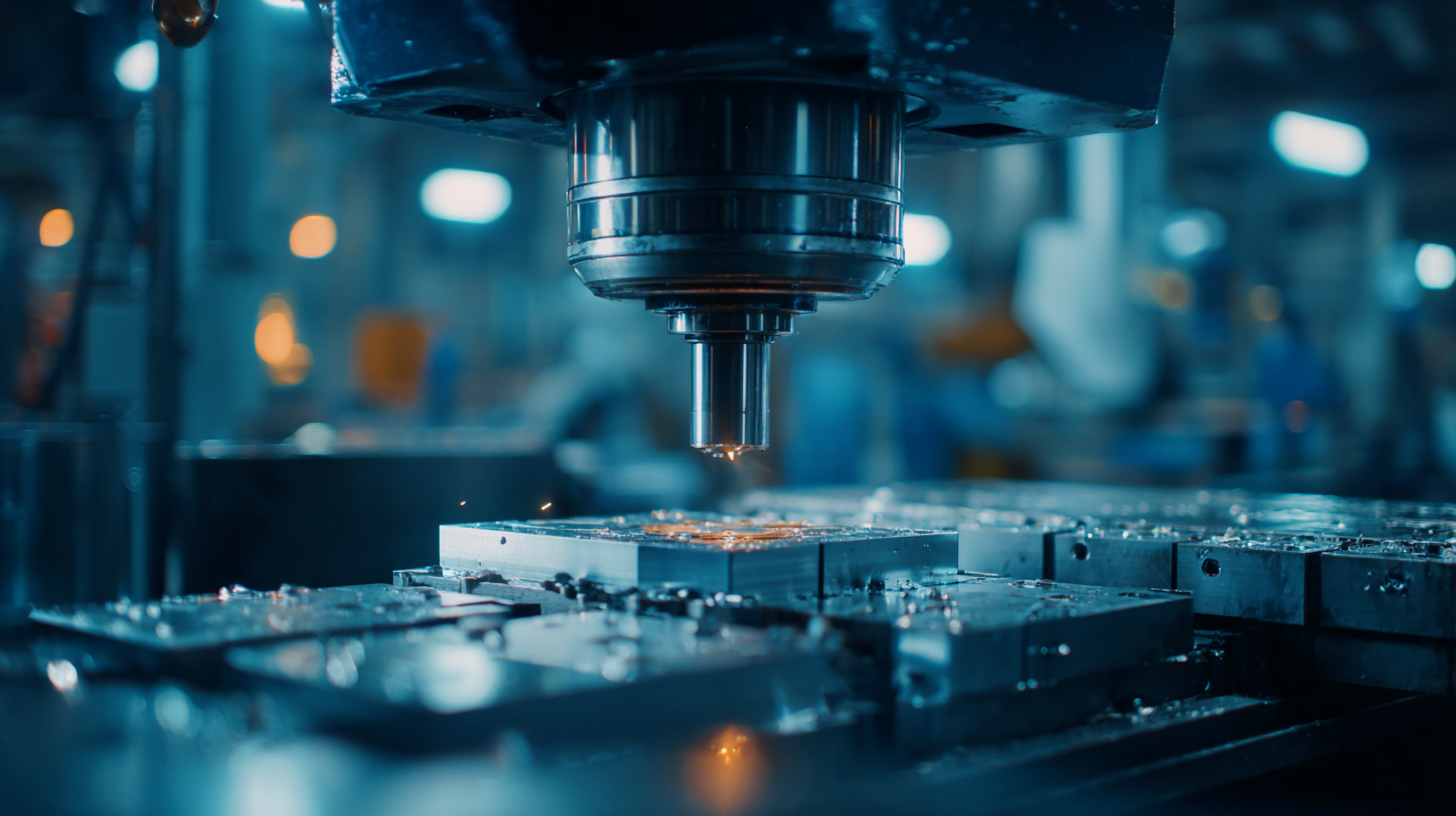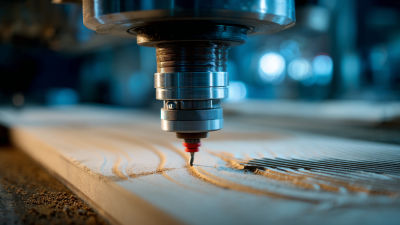The manufacturing landscape is undergoing a significant transformation, largely driven by technological advancements and automation. Among these innovations, "4 Axis Machines" are at the forefront, offering manufacturers improved precision, efficiency, and flexibility. According to a recent report by Statista, the global CNC machine market is projected to grow to approximately $98.5 billion by 2025, with 4 Axis machines playing a crucial role in this expansion. These machines not only enhance the intricacies of machining complex parts but also reduce production times and costs. As industries ranging from aerospace to automotive increasingly adopt these cutting-edge technologies, the potential for unlocking new levels of innovation and competitiveness becomes evident. The adoption of 4 Axis machines exemplifies the shift towards more sophisticated manufacturing processes, pushing the boundaries of what is achievable in modern production environments.

 4 axis machines have emerged as game changers in the manufacturing landscape, delivering unmatched precision and flexibility. Unlike traditional 3-axis machines, which operate solely along the X, Y, and Z axes, 4 axis machines incorporate a rotational axis, allowing for the machining of complex geometries in one setup. This capability not only reduces the need for multiple setups but also minimizes the potential for errors, leading to enhanced accuracy and consistent product quality.
4 axis machines have emerged as game changers in the manufacturing landscape, delivering unmatched precision and flexibility. Unlike traditional 3-axis machines, which operate solely along the X, Y, and Z axes, 4 axis machines incorporate a rotational axis, allowing for the machining of complex geometries in one setup. This capability not only reduces the need for multiple setups but also minimizes the potential for errors, leading to enhanced accuracy and consistent product quality.
For modern manufacturers, understanding the operational benefits of 4 axis machines is essential. These machines enable the production of intricate parts with intricate designs, catering to various industries, including aerospace, automotive, and medical. The integration of advanced CNC technology in 4 axis machines allows manufacturers to optimize their workflows, improve efficiency, and significantly cut down lead times. As the industry continues to evolve, realizing the full potential of 4 axis machining is crucial for staying competitive in a rapidly changing marketplace.
4 axis machining technology is transforming the landscape of modern manufacturing by offering precision, flexibility, and efficiency that traditional methods often can't match. One of its key features is the ability to rotate around an additional axis, allowing for complex geometries and intricate designs to be achieved with minimal setup time. This multidimensional approach enables manufacturers to streamline their production processes, reducing lead times and increasing the overall throughput.
Another significant advantage of 4 axis machines is their capability to handle a wide range of materials, from metals to plastics, accommodating various industries, including aerospace, automotive, and consumer goods. The enhanced accuracy and repeatability of these machines result in higher quality products and reduced waste, which in turn leads to cost savings and sustainability. Additionally, the integration of advanced software and automation controls in 4 axis machining enhances operational efficiency, allowing manufacturers to stay competitive in an ever-evolving market.
The advent of 4-axis machines in manufacturing has significantly enhanced precision and efficiency, driving a transformation in production processes across various industries. According to a recent market report by Grand View Research, the global CNC machine market is projected to reach $100 billion by 2026, with 4-axis systems playing a crucial role in this growth. These advanced machines allow for complex geometries and intricate designs that are impractical with traditional 3-axis machines. By enabling simultaneous operation on multiple axes, manufacturers can achieve tighter tolerances and reduce the need for multiple setups, leading to shorter lead times and lower operational costs.
Moreover, 4-axis machines have been shown to improve productivity by upwards of 30%, as noted in a survey conducted by McKinsey & Company, which highlights the importance of automation in contemporary manufacturing. The ability to perform continuous machining without manual intervention not only speeds up production but also minimizes human error, further enhancing the quality of finished products. As industries increasingly adopt 4-axis technology, the combination of precision and efficiency is setting new standards in manufacturing, ultimately leading to better competitiveness in a rapidly evolving market.
| Feature | 4 Axis Machines | 3 Axis Machines | Difference |
|---|---|---|---|
| Precision | High (±0.005 mm) | Moderate (±0.01 mm) | 4 Axis offers greater precision |
| Efficiency | Increased (up to 40% faster) | Standard | 4 Axis significantly enhances efficiency |
| Complexity of Parts | Can produce complex geometries | Limited to simpler designs | 4 Axis machines excel in complex part production |
| Setup Time | Lower (less frequent retooling) | Higher (more retooling required) | 4 Axis reduces overall setup time |
| Application Industries | Aerospace, Automotive, Medical | General Manufacturing, Woodworking | 4 Axis suits high-tech manufacturing |
Implementing 4-axis machining in your manufacturing workflow requires a strategic approach to ensure seamless integration and maximize efficiency. The first step is to assess your current processes and identify areas where 4-axis technology can deliver the most value. This involves analyzing the complexity of your projects, production volumes, and the types of materials you work with. Understanding these factors will help determine whether upgrading to 4-axis machines is feasible and beneficial.
Once the assessment is complete, the next step is to invest in suitable equipment and train your workforce. Selecting the right 4-axis machine tailored to your specific needs is crucial for optimizing production capabilities. Alongside this, providing comprehensive training for your employees will ensure they are equipped with the necessary skills to operate new machinery effectively. This investment in technology and people will pave the way for improved precision, reduced lead times, and enhanced product innovation, ultimately transforming your manufacturing operations.

The integration of 4 axis machining centers has ushered in a new era of efficiency and precision across various manufacturing sectors. A recent report from Market Research Future indicated that the global CNC machine market is projected to reach $100 billion by 2025, with 4 axis machines playing a pivotal role in this growth. These machines empower manufacturers to produce complex geometries with intricate designs, thereby significantly reducing cycle times and increasing throughput. For instance, a leading aerospace manufacturer implemented 4 axis machining which improved their production speed by 40%, allowing for faster turnaround on critical components.
In the automotive industry, case studies have demonstrated how 4 axis machines are streamlining production workflows. A notable example is a Tier 1 supplier that adopted this technology and reported a 30% decrease in production costs. This was largely attributed to the enhanced capabilities of 4 axis machines, which allowed for multi-side machining in a single operation, minimizing the need for secondary setups. According to a study by Frost & Sullivan, the adoption of advanced machining technologies like 4 axis systems is expected to reduce manufacturing lead times by up to 20%, showcasing the transformative impact these machines have on production efficiency and cost-effectiveness.





